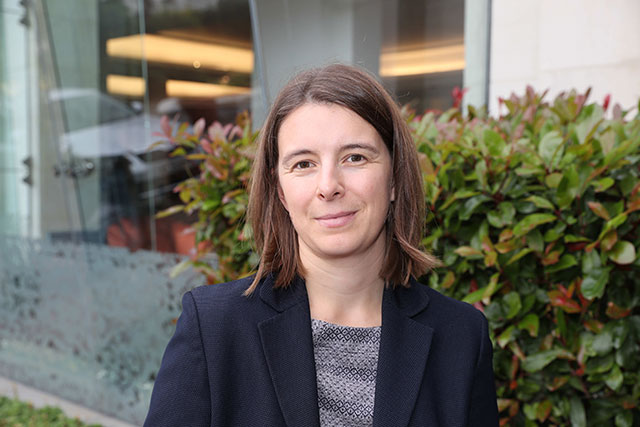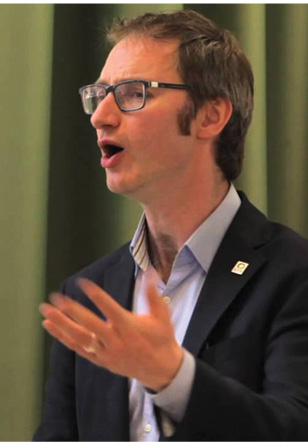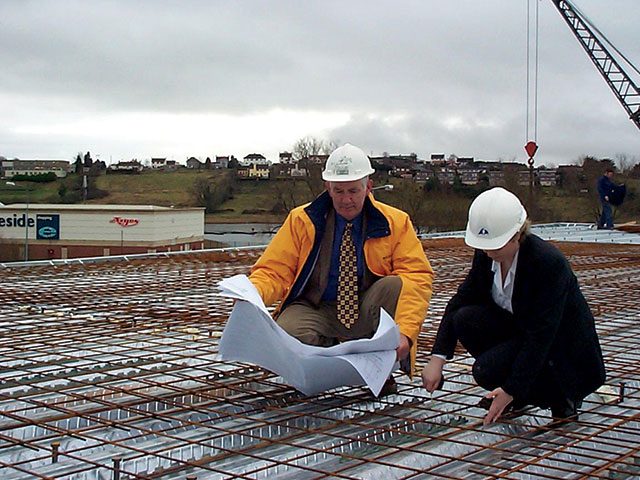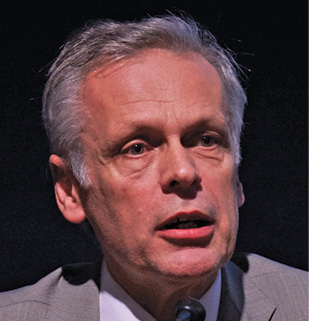
Scotland’s ambitious strategy
16th May 2017
Marrakech musings
16th May 2017Spatial planning and energy efficiency go hand-in-hand

Henk van der Kamp, Vice President of European Council of Spatial Planning, discusses the themes and recommendations of the recently published spatial planning for energy guide, the result of a three year project funded by Intelligent Energy Europe.
 “The guide is as relevant for planners as it is for the public at large,” says van der Kamp. “It addresses the challenge of energy use reduction and lowering greenhouse gas emissions, which are of objectives that confront all of us.”
“The guide is as relevant for planners as it is for the public at large,” says van der Kamp. “It addresses the challenge of energy use reduction and lowering greenhouse gas emissions, which are of objectives that confront all of us.”
The guide has 10 themes, each reflecting a key principle of planning. Three objectives are outlined in the context of each theme, tying in with 10 recommendations. Two case studies, undertaken as part of the development work for the new guide are also featured within a thematic context.
“Spatial planning has a fundamental role in the implementation of successful and long-term sustainable energy solutions. Across Europe, planning departments have a strategic position within local and regional government which can be used to achieve the European Union’s 2020 targets for carbon emissions reduction and energy efficiency, and to increase energy generation from renewables,” he says.
Where master planning is concerned, the new guide emphasises the opportunities that now exist to plan comprehensively for a new development, or for the regeneration of part of a city.
“In relation to sustainable energy, masterplanning is a useful tool to allow the full integration of climate change mitigation and adaptation objectives into the development of an area. The objectives here are for planners to take full control of a new development from the very outset. This will have major implications for energy saving and the use of more efficient energy-related technologies. To make this work will require full collaboration between different group of specialists.”
Van der Kamp cites the Canton of Geneva as a strategic case study. The region has developed a method to scale-up energy opportunities, from site scale to area planning, through collaborative working between the energy and planning departments. Masterplans for regeneration and new development are informed by the evidence base for planning from the municipal plan.
Where urban structure is concerned, he references the work undertaken by South Dublin Council, which has updated its county development plan energy planning policies and objectives based on an improved spatial understanding of the existing and future energy profiles of the urban area.
“Mapping energy demand for a plan area can be used to forecast future energy requirements. The methods used by South Dublin provide an evidence base for both existing and future energy demand thereby allowing different spatial scenarios to be tested,” he explains.
Commenting on the issue of preferred development sites, van der Kamp confirms that it is important to retain the core function of spatial planning, so as to identify optimal locations for different categories of land use. “This can help to reduce conflicts and maximise synergies,” he adds.
Innovative plans put in place by developers in Swindon in this regard were then discussed. Specifically, the work demonstrated how a streamlining of the system for granting permission to develop renewable sites has enabled a democratic and more efficient delivery of renewable energy in the Wiltshire town. This has been achieved through the use of ‘local development orders’. These require sites to be submitted upfront and then permission can be granted at the right time when the sites are ready to be developed.
According to van der Kamp, spatial plan policies must maximise all opportunities for renewable energy generation in a local and or regional area. He referenced the development of a ‘smart grid’ strategy in Grenoble as an excellent example of this principle being enacted. The aim of the project is to provide stakeholders with the information required to tailor energy production and consumption to their needs. One of its most important requirements is the implementation of a multi-fluid and multi-energy platform that can centralise, process, crosscheck, and restore data for the various networks.
The new smart grid will equip 500 new homes with smart meters and data displays, and provide 50 energy boxes to residents in a pilot group in existing buildings. Data shall be displayed publicly in the city and an internet portal created for access to information.
“It is also important to maximise all opportunities for renewable energy generation in a local area,” van der Kamp further explains. “The use of rooftops to capture solar energy is a case in point. The provision of waste-to-energy plants in municipal plans as part of an integrated, ecological system for the management of waste, energy and local resources should also be considered.”
The ECTP-CEU Vice President also pointed out that good spatial planning can significantly reduce the total demand for travel. So by reducing the need for travel and improving the integration of urban public transport with new development areas spatial planning can help to reduce this energy demand.
“Planners must promote development that is close to public transport while providing enough space in streets and roads for cyclists and pedestrians. There is also a need to co-ordinate and link all modes of transport, thereby creating opportunities for multi-modal travel.
“The multi-directional use of public transport should also be encouraged. Concentrating employment and commercial activity in a small number of places should also be avoided. Car sharing must also be encouraged.”
He adds that spatial planning can define standards for ‘low carbon’ and ‘zero carbon’ for both municipal and non-municipal buildings. The work undertaken by authorities in Hannover to develop a zero-emissions housing estate is referenced. The development has been undertaken to support the city’s aim to reduce carbon emissions by 40 per cent by 2020. Up to this point, more than 300 houses have been built to the passive house standard. This is a highly efficient design with a significantly lower energy footprint than conventional housing.
“Solar panels feature prominently within the building design, with other sources of renewable energy used to meet additional energy requirements for the houses. Fundamentally, this is all about zero and low carbon standards being defined in planning policy documents for all buildings,” says van der Kamp.
Concluding, van der Kamp adds that community based energy production schemes are vital. This is because community involvement and participative democracy are core concepts in spatial planning.
“The community must be the owner and the beneficiary of energy production. This is why planners must always work with communities to achieve community-based energy production schemes.”
In order to highlight what can be done in this context, he cites the development of an energy-efficient building to expand local sport, youth, education and leisure facilities in the English village of Gamlingay. The project resulted in the Eco Hub, a highly energy efficient community centre, now run profitably by the parish council.
According to van der Kamp, this initiative illustrates how such a project can help identify and overcome some of the social problems in an area and provide an educational resource for children, students and members of the public to learn about energy efficiency and renewable energy.

